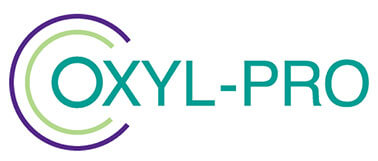Pseudomonas refers to a group of bacteria that can cause lung infections in people.
Unlike Legionnaires’ disease, pseudomonas can spread from one person to another, so it is contagious in certain circumstances.
Pseudomonas infections can spread through contaminated hands or surfaces and, in medical settings, through contaminated equipment.
How Do Pseudomonas Infections Spread?
There are several ways in which pseudomonas can spread:
- It grows in moist places, such as bathrooms, sinks, kitchens, hot tubs and pools
- It can exist in humidifiers and air conditioning systems
- Pseudomonas can grow in hospitals and healthcare facilities, on medical equipment and in air conditioning systems
- It can grow on fruit and vegetables
- It can pass from person to person, through contaminated hands and surfaces.
How Common are Pseudomonas Infections?
The main pseudomonas bacteria, pseudomonas aeruginosa, is very common, and you can find it almost everywhere.
But pseudomonas rarely affects healthy people.
Where there are infections in the community, these are normally due to prolonged contact with contaminated water.
It may colonise as many as one third of people admitted to hospitals. Much of its severity then depends on an individual’s immune system.
In hospitals, pseudomonas may contaminate respiratory equipment and catheters, leading to greater numbers of infections.
Pseudomonas is widespread, but less so as a serious infection. However, patients in hospitals are more at risk of it developing into something serious.
Who is at Risk?
In a hospital or healthcare setting, people who are already ill are most vulnerable to contracting a pseudomonas infection.
This at-risk group includes people with:
- Weak immune systems
- Diabetes
- Cancer
- Cystic fibrosis
- HIV
- Surgical wounds
- Severe burns
- Chronic pulmonary obstructive disease.
Pregnant women are also more at risk from pseudomonas because changes to their hormones can affect their immune systems.
How Long Does Sickness Last?
Because pseudomonas is so commonplace in hospitals, it can be difficult to identify how serious an issue it is.
Individual cases of illness may display different symptoms, and these can last for over a week. Pseudomonas can affect any part of the body, so symptoms will vary but can include:
- Coughing, congestion and pneumonia-like symptoms
- Stiffness, joint pain and fever, fatigue and chills
- Pain and itching in the ears, and liquid discharge from them
- Pain and redness in the eyes
- Skin rashes and pus-filled pimples
- Urinary tract infections
- Wound infections, including inflammation and leaking fluids
- Discharges and smells from soft body tissue.
The seriousness of the infection will depend on the type of pseudomonas infection it is. It is also important that anyone showing symptoms has treatment with antibiotics soon as possible.
The most serious illnesses caused by pseudomonas are:
- Pneumonia
- Septicaemia
- Gastro-intestinal
- Wound infections
- Urinary tract infections.
Treatment involves a course of antibiotics and in most cases, this will clear the infection. The fluoroquinolones family of antibiotics has proven to be effective against pseudomonas in cases where other drugs have been unsuccessful in treatment.
How Do You Avoid Getting an Infection?
As with so many other infections and illnesses, prevention is better than cure, and this means taking measures to avoid getting an infection.
It is therefore important to first understand how pseudomonas spreads.
Generally, in hospitals and other healthcare environments, it will be from contaminated equipment, instruments, surfaces and sometimes from people’s hands.
Where there is insufficient cleaning of catheters and other equipment, this can leave people vulnerable to infection.
Patients who have undergone surgical procedures can have open wounds which become infected, and patients on ventilators can also be at risk from contracting pseudomonas.
Clearly, it is vital that people follow careful hygiene procedures, including thorough, regular hand washing and sanitising.
People should not share towels, and should wash contaminated clothes or sheets at temperatures that will kill bacteria – at 60°C.
Hospital staff with illnesses should avoid coming to work until at least 48 hours from when their symptoms clear up.
Hospital visitors should follow clear hygiene guidelines, especially around washing hands and using sanitiser.
Cleaning should involve the use of a biocidal surface sanitiser.
Will Water Treatment Prevent the Spread of Pseudomonas?
Pseudomonas can grow in biofilm, which builds up inside pipework and other parts of water systems.
Therefore, applying a water treatment to remove and prevent the build-up of biofilm is a good way of helping to prevent pseudomonas infections.
Oxyl-Pro clean is an excellent biofilm remover and quickly kills bacteria such as pseudomonas, legionella and listeria.
Treating water systems is an effective way of reducing the risk of pseudomonas in hospitals, healthcare facilities and a wide range of commercial, industrial and domestic settings.
For more information about applying Oxyl-Pro in water treatment, please call us on +44 1606 851 782, email [email protected] or fill in our contact form and we’ll be in touch.

